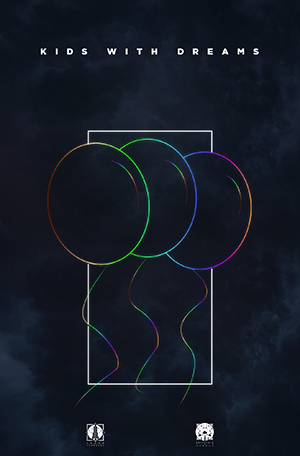
Why there’s an open button hole on your lapel, a back to your vest, and why the pleats on your cummerbund face upward.
Black tie is a dress code for formal evening occasions. It means you should wear a tuxedo.
You’ll need: a black jacket with silk or satin lapels, matching black trousers with a silk or satin stripe down the outer seams, a white dress shirt, and a black bow tie that matches the fabric on the lapels. Consider a cummerbund or vest.
Patent leather opera slippers with bows, once considered the norm, make some guys rightfully squeamish. A black Oxford will do. You’ve got three choices when it comes to socks: black, black or black.
Six o’clock is the time at which “evening” is generally accepted to have commenced.
A tux wasn’t always considered formal. In the Victorian era, the tuxedo, or dinner jacket, came into fashion as a casual alternative to the tailcoat.
Hit the jump for the rest of the gems of knowlegde
In those days, “evening wear” marked the transition from the activities of the afternoon to the pleasures of the evening, and wasn’t seen before 7 or 8 o’clock.
In some circles, black tie is still deemed inappropriate for day events, like afternoon weddings.
Among Victorian gentlemen, the dinner jacket was for stag dinners at the club. But by 1896, the American book The Complete Bachelor: Manners for Men noted, “Now it is in vogue during the summer at hotel hops, small informal parties, to the play, at bowling parties, restaurant dinners, and, in fact, any occasion not formal.”
The youthful energy of the Jazz Age helped sound the final blow for the tailcoat. Emily Post wrote in 1922 that a man who couldn’t afford “two suits of evening clothes” could get by with a tuxedo, which “is worn every evening and nearly everywhere, whereas the tailcoat is necessary only at balls, formal dinners, and in a box at the opera.”
The dinner jacket’s dominance was further cemented by—who else?—the Prince of Wales. He championed midnight blue as an alternative to black, because those newfangled electric lights tended to make black look slightly green.
Many vests were originally backless. You can thank the guys who started shucking their jackets before getting on the dance floor for today’s incarnation.
By the Great Depression, the contours of the tuxedo were set. It was black, with a shawl collar or peaked lapel in silk, satin or grosgrain. Notched lapels, common today, are considered slightly less formal.
In the interwar period, the cummerbund arrived. This pleated waistband was worn instead of a vest.
The pleats on a cummerbund face upward. Originally, they were intended to hold ticket stubs and such. The pleats have since earned the cummerbund the nickname “crumb catcher.”
No cummerbund (or vest) is worn with a double-vested dinner jacket, since it’s never unbuttoned.
Most tuxedo trousers are cut for suspenders, which are hidden by the vest.
By World War II, a shirt with a turndown collar was acceptable. Tuxedo shirts with pleated fronts have been worn since the 1930s, and by the ’70s gave way to elaborate, colorful ruffles. Today, the pleats are small and staid again.
French cuffs have long been standard with black tie. This is the time to wear those cufflinks.
In August 1936, Esquire noted that white dinner jackets, worn with black pants, were appearing in Cannes and Palm Beach. They are less formal than a black tuxedo, suitable for summer events, and should not be confused with “white tie.”
White tie is the most formal evening dress code in the Western world. It replaces the tux jacket with a black jacket with tails. The vest is white. The bow tie is white. And here, a wingcollar shirt (instead of one with a standard turndown collar) is common.
With a white or ivory dinner jacket, the lapels are the same fabric as the jacket itself.
You’d wear white tie to the coronation, black tie to the Oscars—and no tie while hang-gliding away from the casino, being shot at by Oddjob.
A boutonnière, a single bloom, is worn on the left lapel above the heart. Some lapels are made for one, with an open button hole and a latch stitched on the concealed side to steady the stem. Otherwise, you pin the thing to the front of the lapel.
Tuxedo jackets without vents are considered the most formal.
A single button is most common as the closure on a single-breasted tux.
A topcoat is right for a tux. A trench is wrong.
Counterculture brought with it the counter-tux. In the late ’60s, tuxedos started appearing in outrageous patterns. GQ suggested a plaid tux with black satin lapels for a daytime wedding in 1972.
Black tie has since regained its hold, but often in diluted form thanks to dress codes like “creative black tie” or “festive black tie,” which just confuse one’s guests. Still, some experiments work. Ryan Gosling looked snappy in his custom Salvatore Ferragamo tux at theDrive premiere. It was blue. Not midnight blue—blue blue.
Besides Ferragamo, some contemporary masters of black tie include Tom Ford, Hugo Boss, Paul Smith, Thom Browne, and Valentino.
It is best to know how to tie your own bow tie. But a pre-tied bow tie won’t provoke any criticism. A clip-on one will.
Shirt studs should be black, gold or mother-of-pearl. Same for cufflinks.
Where black tie is required today, it will usually be noted on the invitation. In some cases, however, it is implicit—like opening night at the opera.
When in doubt about what to wear, ask the host or hostess. Not a friend who is also going.
(Spotted at Park & Bond)
